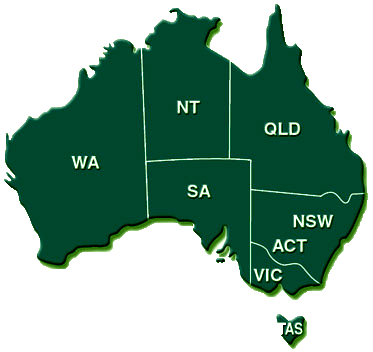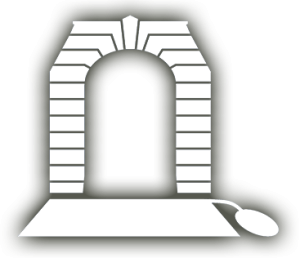
Ray’s appeal to the Tribunal was heard today 26th March 2020 by telephone. Following the hearing Ray reported on the RCB facebook site: ” Hi all. Ken (Ken Marsh RAAF) and I are very happy with how the hearing went this morning. Both because of the questions and comments from the Tribunal and their demeanour towards us. Although we can’t reveal the detail of the hearing we can say that some of the Tribunal’s comments were directly opposed to what has been the Defence position on a number of issues. There were two reps from Defence, one from honours and awards and the other from nature of service. Neither had much to say beyond they thought it was all peacetime service. The Tribunal advised that it is normally a few weeks before their final report comes out but, given the current circumstances, it may be a bit longer. RCBRG will keep everyone informed.
Here is his Ray Fulcher’s opening statement.
“I have provided the Tribunal with a comprehensive and compelling case for the upgrade of RCB service between 1970 and 1989 to warlike.
I have supported my case with over 350 primary and secondary documents, including over 130 SECRET and TOP SECRET documents.
I have set out the law as it pertains to RCB service, following Federal Court precedent and the principles set down by Justices Clarke and Mohr.
Both Justices examined the notion of incurred danger, or being exposed to the risk of harm, as a condition of ‘qualifying service’ that has been the basis of legislation and policy since 1914.
Both Justices supported the historical and legal approach to this notion in finding that the relevant danger need not be imminent nor even realised before meeting the legislative and policy threshold.
It has been this understanding of the incurred danger test that Defence have got so abysmally wrong over the past 14 years.
But this is not the only area in which Defence have erred in relation to RCB service.
The evidence on the warlike nature of RCB service has been available in the archives for decades for anyone with access, rudimentary research skills, an unbiased mind, and basic understanding of repatriation law to see.
Instead, for over a decade, those in Defence responsible for reviewing past service have tied themselves in ever more feeble and ridiculous knots to deny RCB veterans the simple recognition of their service according to law.
Every excuse Defence have manufactured in those years as a reason to deny RCB service has been embarrassed by the readily available evidence. I say embarrassed because on presentation of evidence refuting Defence’s excuses it has unfailingly refused to discuss the matter further.
I will give three frustrating examples.
- Defence has claimed that the presence of service families at Butterworth proved that RCB service was peacetime because “Had it been warlike, Australia would not have put families or other innocent civilians in such danger…”.[1] Defence were provided with Australian newspaper articles[2], Defence Committee minutes[3], and the 2 RAR ‘points system’[4], all showing that ADF families were present during the First Emergency and why. Defence’s response? Silence.
- Defence has claimed that life at the base and in the surrounding areas went on as normal during the period, with free movement and no curfews or other restrictions.[5] It was provided with evidenced from the Straits Times and JIO intelligence reports that described curfews, house to house searches and social disjunction similar to the First Emergency and requiring similar responses.[6] Defence’s response? Silence.
- Defence claim that there was no state of war or emergency in Malaysia following the end of the Indonesian Confrontation. The Malaysians seem to think otherwise and Defence were provided with a link to the Malaysian Government Archives which describe the extent and severity of the armed conflict.[7] Defence were provided with reference to books written by Malaysia’s armed forces and with academic papers describing the war and emergency.[8] Defence received Ordinance No. 1 of 1969 which was the Emergency Declaration used throughout the period.[9] Numerous Australian intelligence reports detailing Malaysian armed forces operations against the communists, including fighter and bomber sorties from Butterworth, were given to Defence. In May 2019 Defence finally admitted that there was an emergency declared in 1969 but claimed that “there was no use of emergency powers in relation to communist terrorists or insurgents”. Defence were provided with the regulations promulgated under Ordinance 1 of 1969 that established special courts for communists and required those 18-55 to form “home guards” to defend their villages against communists.[10] Defence’s response? Silence.
We now have the spectacle of the VCDF confirming on the one hand that there was a threat “from hostile forces to Australian forces” at Butterworth but that Australian forces “did not incur danger from hostile forces” on the other.[11]
The problem with this however is that “threat” and “danger” are synonyms, they are interchangeable, having one and the same meaning. It is the same as saying that there was a danger to Australian forces from hostile forces but there was no danger to Australian forces from hostile forces.
The Defence position is a nonsense. Having acknowledged the threat to ADF personnel from hostile forces the only lawful avenue open is to apply the incurred danger test and confirm the warlike status of the deployment.
The incurred danger test is an objective legal test that can be applied to determine the nature of service for ADF personnel in a fair and consistent manner.
It has stood the test for over 100 years. But Defence has transformed it into a subjective assessment. That assessment relies, not on objective law and established fact, but on the current opinion of assessors as to whether the danger incurred was “significant” or “sufficient” enough to satisfy the assessors’ idea of what is worthy of warlike recognition. This approach is unjust, unfair and unlawful. It is the objective test, not subjective opinion, that must be applied.
To quote DHAAT in the case of Ubon, it is “The factual circumstances that existed in their totality and not just as appears on official documents” that must be considered.
That is why I ask the Tribunal to look at the totality of the evidence, recognise the objective danger described repeatedly in the evidence and apply the incurred danger test.
I then ask you to use your power to recommend to the Minister an upgrade of RCB service to warlike so that this injustice may finally be rectified.
[1] Miller, A., Assistant Advisor, Letter to Mr Robert Cross, Welfare Officer 8/9 RAR Association on behalf of Minister Assisting the Minister for Defence, 5 September 2001.
[2] The Age, 14 October 1955. FIRST WIVES to join their soldier husbands in Malaya
[3] Notes from Defence Preparations Committee, A816 52/301/328, National Archives of Australia. “a valuable effect on morale, not only of the married members, but of the force as a whole”
[4] 2 RAR, Routine Orders, 18 November 1955, AWM95 – AACD, AWM.
[5] For instance see: Department of Defence, 2011 Nature of Service Branch Review of ADF Service at Butterworth 1970-1989, 14 October 2011; Griggs, R.J., Vice Chief of the Defence Force, Letter to RCB veterans, April 2018
[6] JIO, JIO Briefing for Assistant Services Adviser, 8 November 1971. Malaysians were asked if they “…were experiencing the same problems with squatters that existed during the First Emergency.” The Malaysians responded that “…the problem did exist and that every endeavour was being made to relocate the squatters.”
[7] “This second armed rebellion forced a second state of Emergency in Malaysia from 1968 to 1978”. … “The guerrilla warfare triggered by CPM [Communist Party of Malaya] dragged on for 21 years.”
[8] Malaysian Army’s battle against communist insurgency in Peninsula Malaysia, 1968-1989.
[9] Ordinance No. 1 of 1969, Emergency (Essential Powers) Ordinance.
[10] Essential (Security Cases) Regulations 1975 and Essential (Community Self Reliance) Regulations 1975
[11] VCDF letter to Ken Marsh. “no identified threat above low level from hostile forces to Australian forces”
“cannot be classified as equivalent to the extant warlike service classification as members did not incur danger from hostile forces”.
RELATED ARTICLE – RCB Recognition – Ray Fulcher’s personal Appeal to DHAAT


